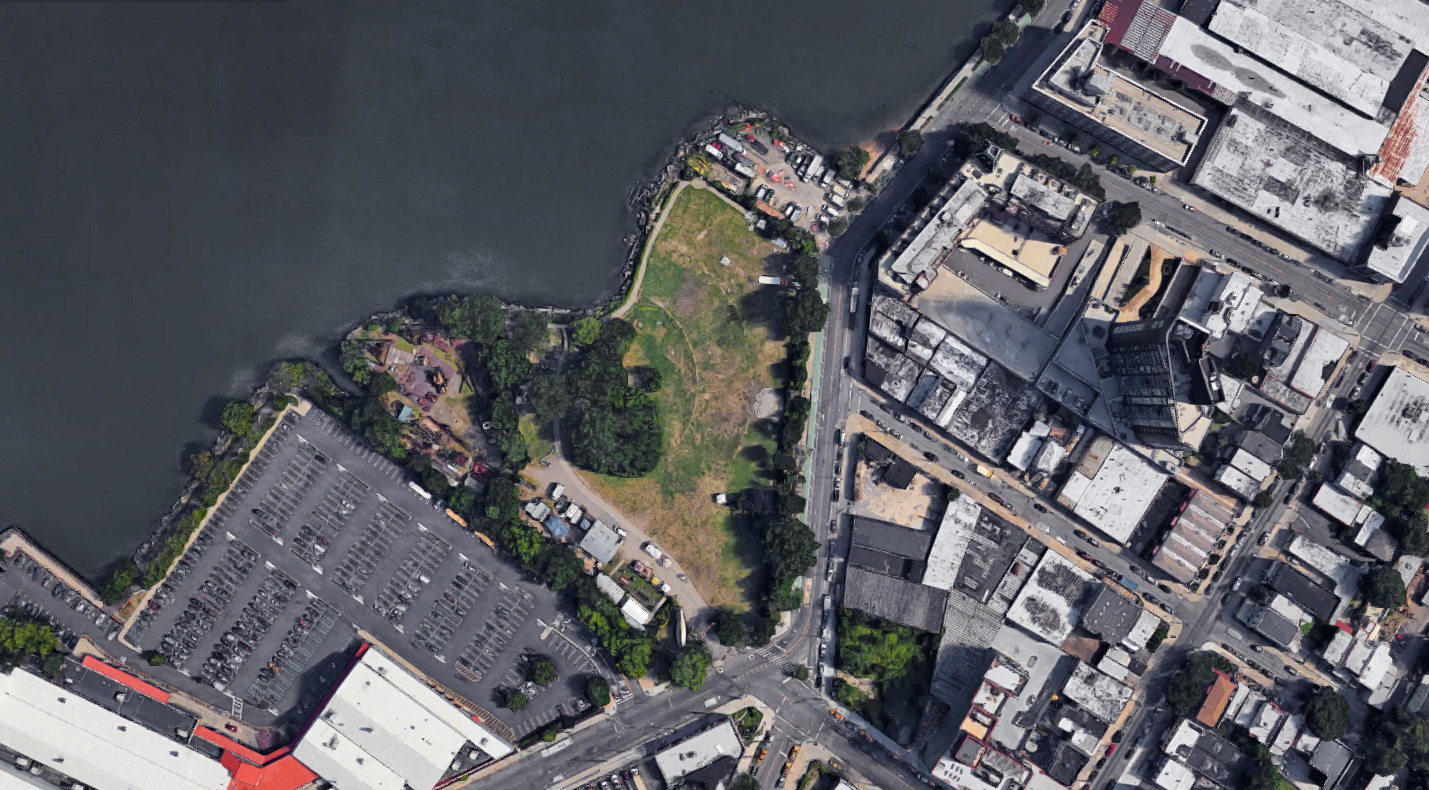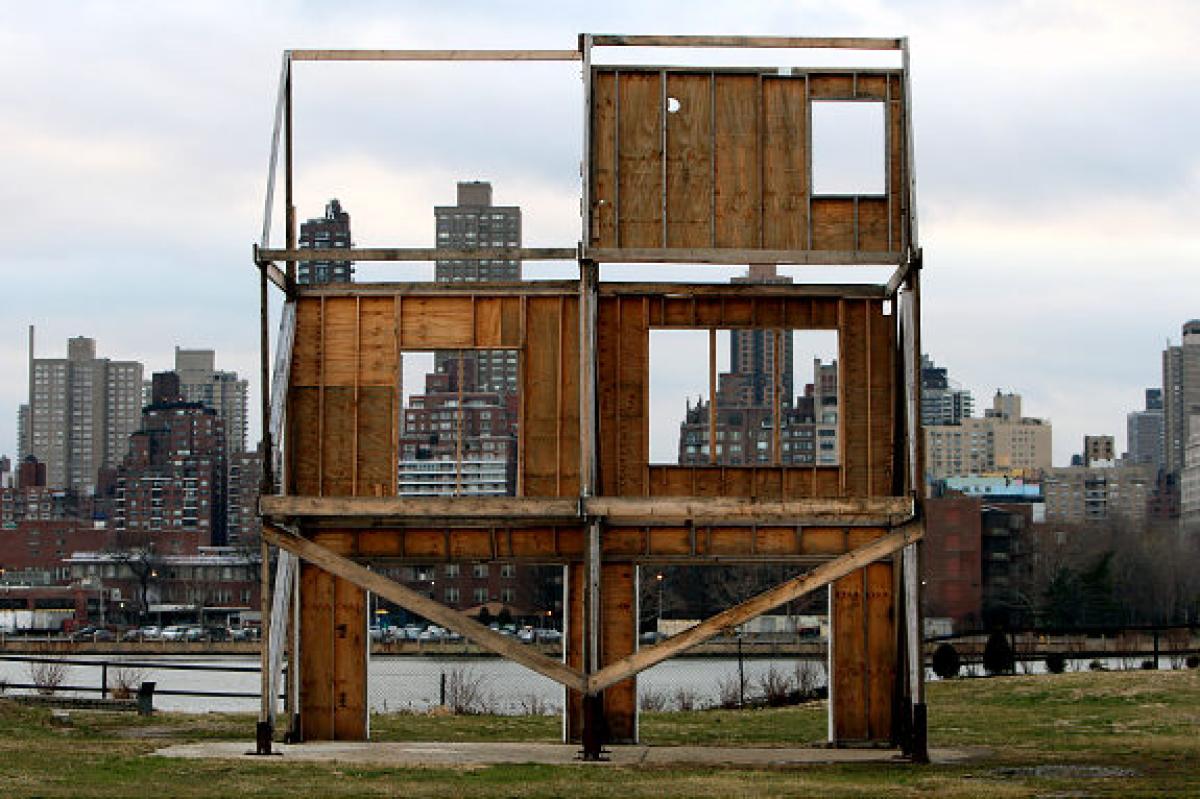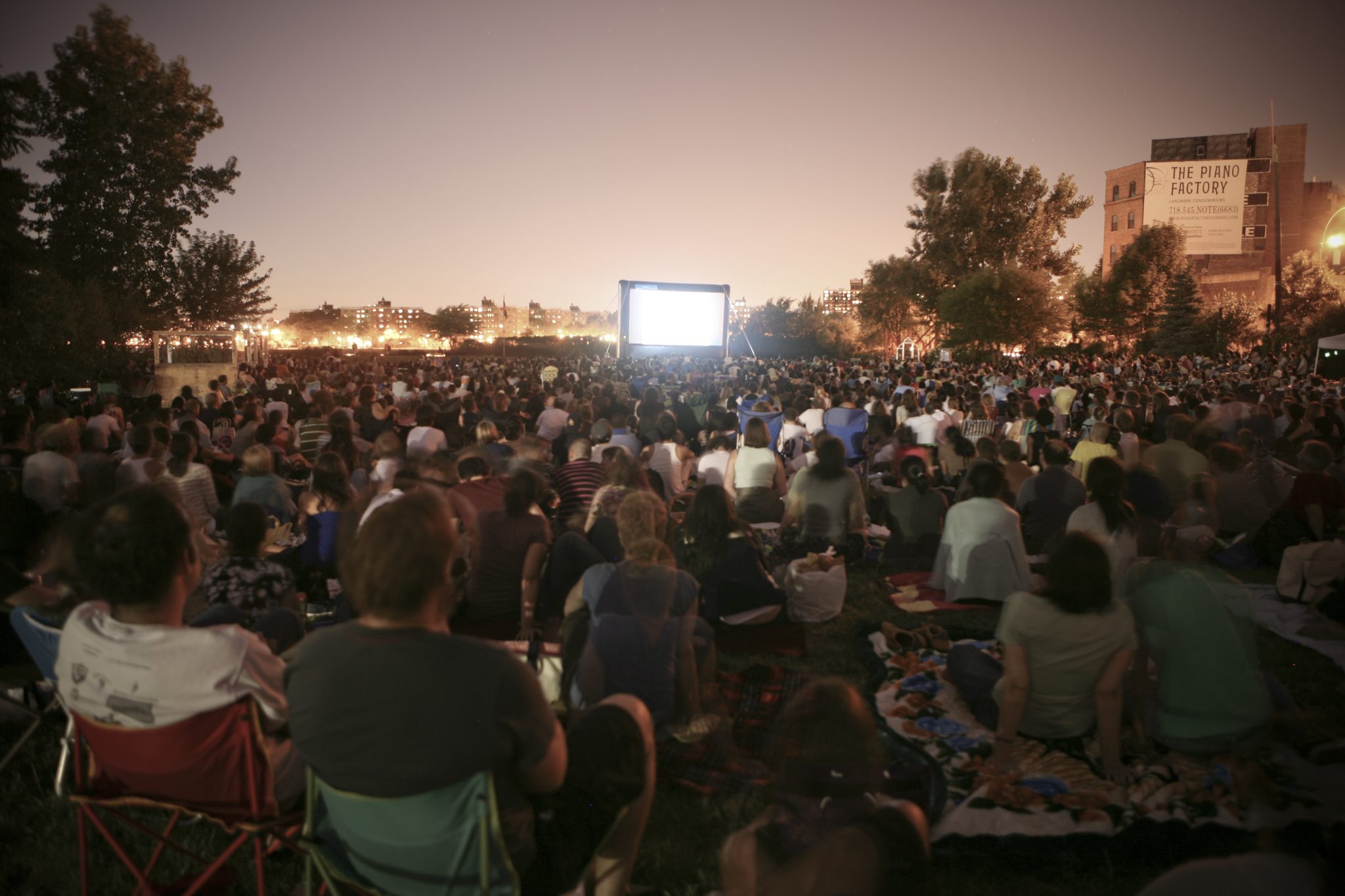

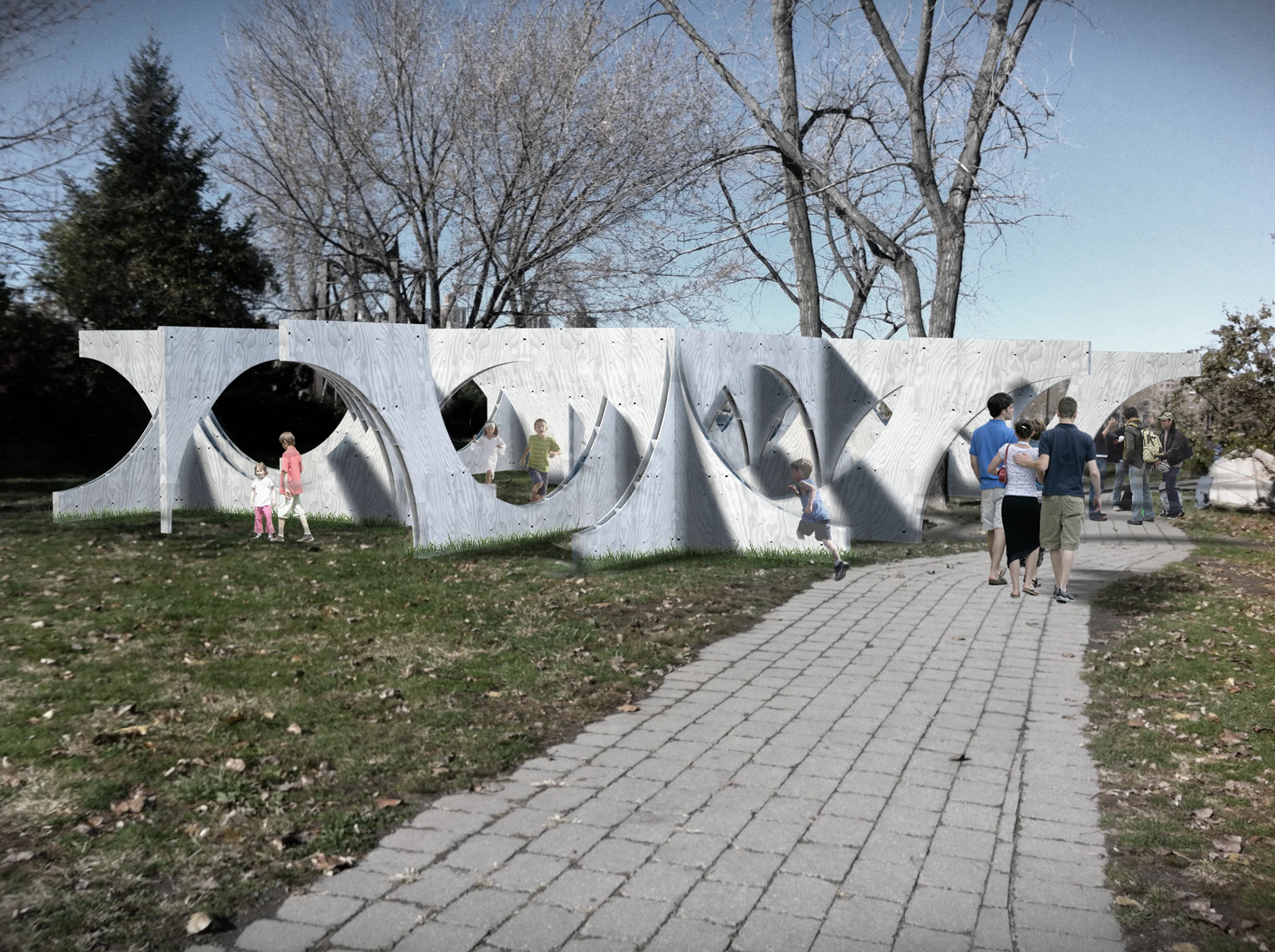
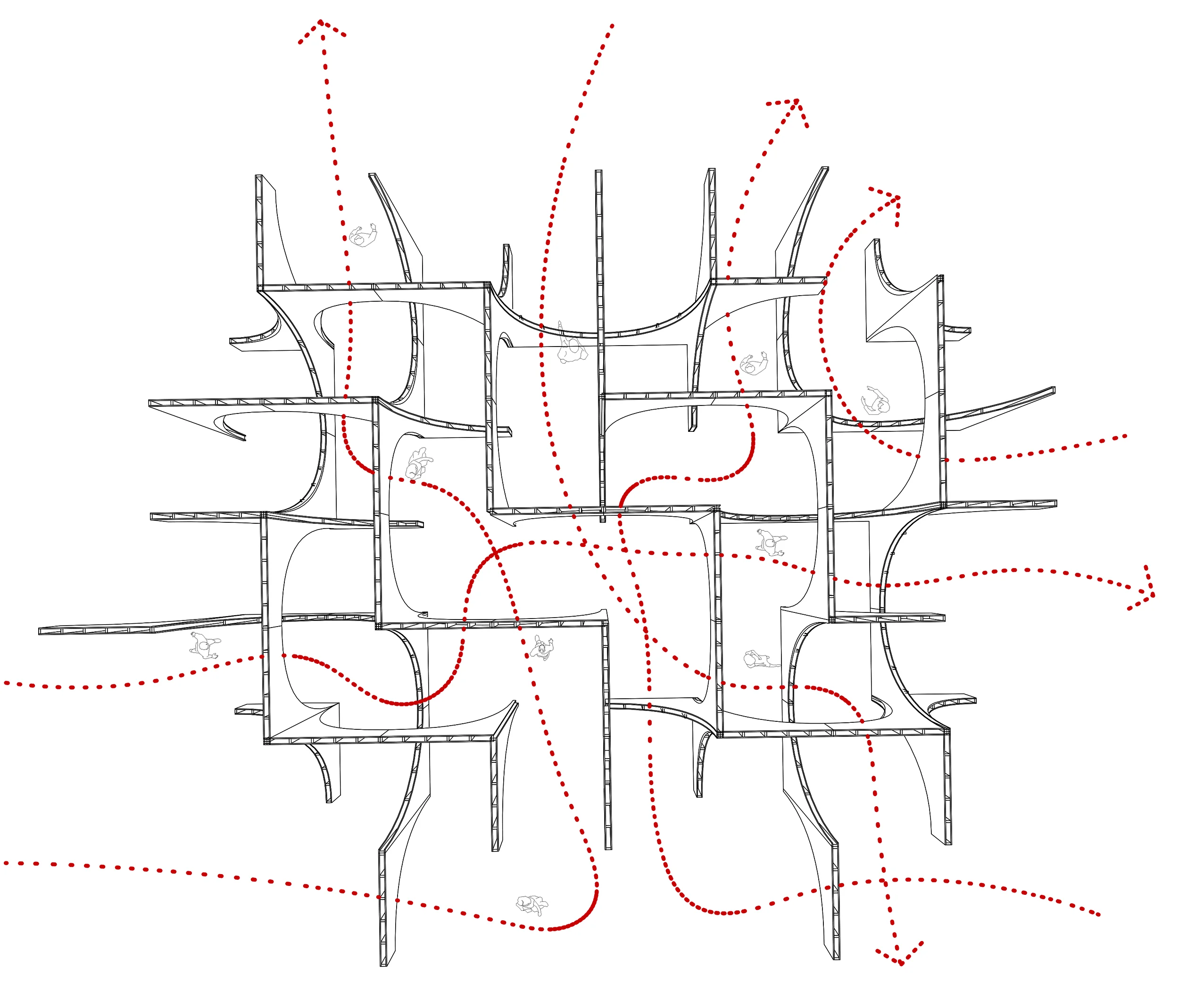

Pi-Intro
Pi Summer Pavilion
Pi-Intro
Pi Summer Pavilion
π Summer Pavilion, New York City, USA
Competition 2015
superpose members: (in alphabetical order)
Markus, Matteo, Tim
Do-it-yourself summer pavilion with budget limit of 5000$, to be assembled by the winning team in a New York City community park
For Socrates Sculpture Park’s annual low-budget summer pavilion competition, we propose an infinite porous structure composed of modular, intersecting circular arches. The design was not to exceed a cost frame of 5000$, and had to be completely detailed and assembled on site by the winning team. While some technical assistance from the staff at Socrates Sculpture Park is generally provided, the material choice and detailing has to be simple enough to be executed by untrained volunteer helpers.
Socrates Sculpture Park is located in the neighborhood of Astoria, Queens, directly at the East River. It is an outdoor museum and public park where artists can create and exhibit sculptures and multi-media installations. It was created in 1986 by American sculptor Mark di Suvero on an abandoned landfill and illegal dumpsite, and was given official status in 1998 by former New York City mayor Rudolph Giuliani as a permanent city park.

Pi-Strategy
Pi-Strategy
Strategy
π (Pi) is an infinite porous structure composed of modular, intersecting circular arches. The ideal shape of the arch is distorted through repetition and layering, resulting in an endless form devoid of scale. The abstract structure extends into the space with mathematical precision, measuring and creating spaces, repetitive and at the same time unique through interaction with the environment. Spatially diverse and flexible, modules can be added and subtracted to adjust to different sites and contexts.
Site / Visitor Interaction
A harmonious balance is achieved by embracing natural elements of the site and fostering interaction with visitors. Pi encompasses a large boulder and trees present on the site, while placing the folly along and overhanging the main pathway invites the public to explore.
A loosely defined boundary allows the folly and landscape to flow into one another confounding the beginning and end of both. Without any defined entrance, people are free to explore from all directions. Various types of movement from relaxed to hasty are accommodated. One may meander through the arches in a long, zigzagging fashion. Alternatively one may create a more direct path by stepping over the thresholds on the ground (upside down arches). The height of these is high enough to force one to consciously step over it, and low enough to sit on, creating opportunities for greater awareness of spaces that are at once enclosed and defined, yet open and organic.

Pi-Assembly
Pi-Assembly
Module / Materials / Assembly
The most ordinary materials (plywood and wooden studs) are assembled to create an abstract, modular structure. Each module is one half of an arch and composed of two 4’ x 8’ sheets of plywood and 2x4 wood framing. Framing would be constructed on the ground, lifted up and sheathed in plywood. Once the initial modules are in place, the folly becomes self-supporting. Elements touching the ground are to be anchored, creating greater stability.
Our intent is to paint the modules with two shades of white. One wash would be very thin, allowing the grain of the plywood to show through, while the other would be opaque. These two treatments would be used only for the outside surfaces of the plywood sheathing and applied to different neighboring arches, thus enhancing the spatial experience. In this way we hope to achieve a balanced interplay of material and surface.
Module assembly
Recycling
Since the pavilion is made almost exclusively out of wood, we propose to disburse of materials in an environmentally and socially conscious manner. Options include recycling into the production of wood pellets for heating, mulch to return into the carbon cycle, or donating to arts and education organizations who may need or desire wood materials. This is applicable due to the fact that the modules maintain large dimensions of usable plywood and wooden studs.
Budget + parts

Pi-Circulation
Pi-Circulation
